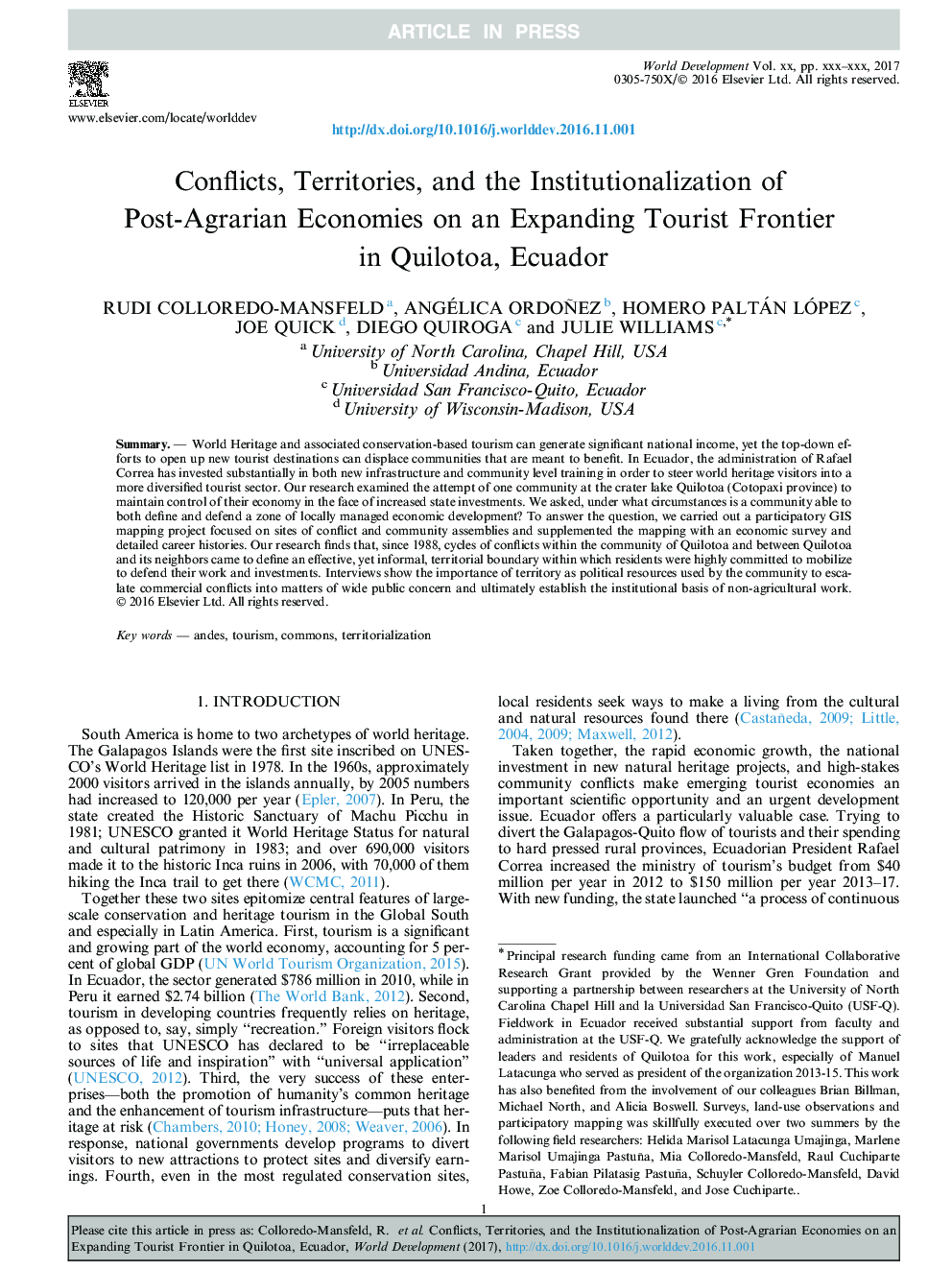| Article ID | Journal | Published Year | Pages | File Type |
|---|---|---|---|---|
| 7392347 | World Development | 2018 | 13 Pages |
Abstract
World Heritage and associated conservation-based tourism can generate significant national income, yet the top-down efforts to open up new tourist destinations can displace communities that are meant to benefit. In Ecuador, the administration of Rafael Correa has invested substantially in both new infrastructure and community level training in order to steer world heritage visitors into a more diversified tourist sector. Our research examined the attempt of one community at the crater lake Quilotoa (Cotopaxi province) to maintain control of their economy in the face of increased state investments. We asked, under what circumstances is a community able to both define and defend a zone of locally managed economic development? To answer the question, we carried out a participatory GIS mapping project focused on sites of conflict and community assemblies and supplemented the mapping with an economic survey and detailed career histories. Our research finds that, since 1988, cycles of conflicts within the community of Quilotoa and between Quilotoa and its neighbors came to define an effective, yet informal, territorial boundary within which residents were highly committed to mobilize to defend their work and investments. Interviews show the importance of territory as political resources used by the community to escalate commercial conflicts into matters of wide public concern and ultimately establish the institutional basis of non-agricultural work.
Related Topics
Social Sciences and Humanities
Economics, Econometrics and Finance
Economics and Econometrics
Authors
Rudi Colloredo-Mansfeld, Angélica Ordoñez, Homero Paltán López, Joe Quick, Diego Quiroga, Julie Williams,
